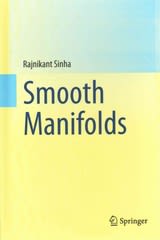Question
Homework 3 Work on the following problem set and show your work within the document. Use SPSS to answer the questions. Chapter 5 1.Researchers are
Homework 3
Work on the following problem set and show your work within the document.Use SPSS to answer the questions.
Chapter 5
1.Researchers are interested in following new trends for Huntington Disease, a genetic based disorder that follows an autosomal dominant inheritance pattern (only one of two alleles is needed from a parent for the child to have the disease).Late onset of the disease may go undiagnosed in some new populations.Suppose a couple, one of whom's father was Huntington positive, has triplets and later discovers that she has the disease.What is the probability that at least one child has the disease?
2.The following is a table relating a group of 1000 patients' true breast cancer statuses and their corresponding test results after receiving a mammogram.
Cancer Status
Test Result
PositiveNegative
Total
Breast Cancer
223
80
303
No Breast Cancer
13
684
697
Total
236
764
1000
a.What is the probability of a positive test, given that the patient has breast cancer?
b.What is the probability of a negative test, given that the patient is breast cancer free?
3.Describe the shape of the histogram below with reference to its central location, spread, skew, and kurtosis.
4.The prostate surface antigen test (PSA) is commonly used to detect early signs and symptoms of prostate cancer in men. However, the PSA test has come under quite a bit of public scrutiny for its relatively high false positive rate around 25%. Assume the prevalence of prostate cancer in men above the age over 65 is 47%. Investigators looking at the performance of the PSA test sample a group of 10,000 men over the age of 65, and come up with 5,500 positive results.What percent of men taking the test with prostate cancer will get a positive result?
Chapter 17
1.Suppose a new research study at a major university near you is investigating an outbreak of food borne illness from the cafeteria. Of 1,400 students that used the cafeteria that day, 860 reported severe diarrhea and vomiting. That same day, the cafeteria reps provided camera evidence that 3/4 of the students consumed food from the seafood section, and they suspect that station to be the culprit. After interviewing the 860 students that reported symptoms matching a potential outbreak, 798 of the students reported eating at the seafood station.What is the relative risk of food borne illness for those that ate from the seafood section versus those that did not?
2.Recent evidence has surfaced regarding the effect of multiple CAT scans on the increase in risk for blood related cancers in children aged 5-18. Suppose after selecting 267 cases of childhood cancers, researchers found that 139 had received one or more CAT scans.Of the 382 matched sibling controls without blood cancers, only 89 reported having exposure to one or more CAT scan.What is the risk difference between the two groups?
3.Define selection bias in a study. Can you suggest an example (hypothetical or otherwise) of possible selection bias?
4.Can you explain confounding to a classmate or other acquaintance? Can you think of an example to help with your explanation?
5.4S coronary mortality. The Scandinavian simvastatin survival study (4S) was a randomized clinical trial designed to evaluate the effects of the cholesterol-lowering agent simvastatin in patients with coronary heart disease. Over 5.4 years of follow-up, the treatment group consisting of 2221 individuals experienced 111 fatal heart attacks. The placebo group of 2223 individuals experienced 189 such events.Calculate the risks in the groups and test the difference for significance. In relative terms, how much did simvastatin lower heart attack mortality?
6.Drug testing student athletes. The Supreme Court of the United States ruled in 2002 that schools could require random drug testing of students who participate in after-school activities. At that time, it was not known whether random drug testing reduced use of illicit drugs. To address this question, researchers at the Oregon Health and Science University completed a study in which student athletes at Wahtonka High School were subject to random drug testing, while student athletes at Warrenton High School were not subject to random testing. Five of the 95 student athletes at the Wahtonka school were positive for illicit drugs, while 12 of 62 student athletes at Warrenton High School were positive.Compare the experience of these two schools with methods introduced in this chapter. This question is intentionally left open to give students the opportunity to analyze the data in ways they see fit. More than one correct response is possible. Include both descriptive and inferential statistics in your response.
Step by Step Solution
There are 3 Steps involved in it
Step: 1

Get Instant Access to Expert-Tailored Solutions
See step-by-step solutions with expert insights and AI powered tools for academic success
Step: 2

Step: 3

Ace Your Homework with AI
Get the answers you need in no time with our AI-driven, step-by-step assistance
Get Started


